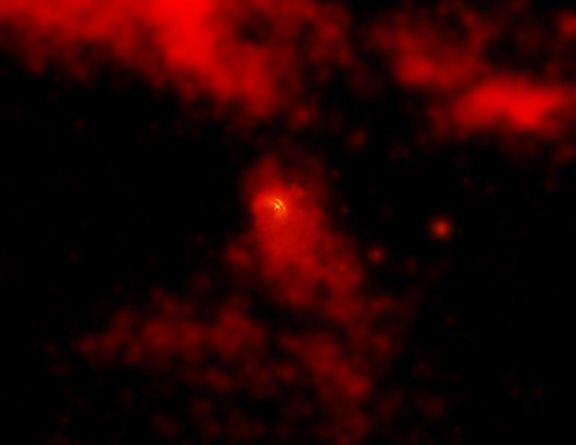Pulsar Wind in the Vela Nebula

Explanation:
The Vela pulsar
was born
10,000 years ago at the center of
a supernova -- an
exploding star.
In this Chandra Observatory
x-ray image, the pulsar still produces a
glowing nebula at the heart of the expanding cloud of
stellar debris.
The pulsar
itself is a
neutron star,
formed as the stellar core
was compacted to nuclear densities.
With a strong magnetic field, approximately the mass of the Sun,
and a diameter of about 20 kilimeters, the Vela pulsar rotates
11 times
a second.
The sharp Chandra image
aids astronomers
in understanding
such extreme systems as
efficient
generators
of high voltages which drive
structured winds
of electrically charged particles.
An x-ray bright nebula is created as the pulsar winds
slam into the surrounding material.
This view spans about 6 light-years across the central region of the
much larger
Vela supernova remnant.
Authors & editors:
Robert Nemiroff
(MTU) &
Jerry Bonnell
(USRA)
NASA Web Site Statements, Warnings,
and Disclaimers
NASA Official: Jay Norris.
Specific
rights apply.
A service of:
LHEA at
NASA /
GSFC
& Michigan Tech. U.

